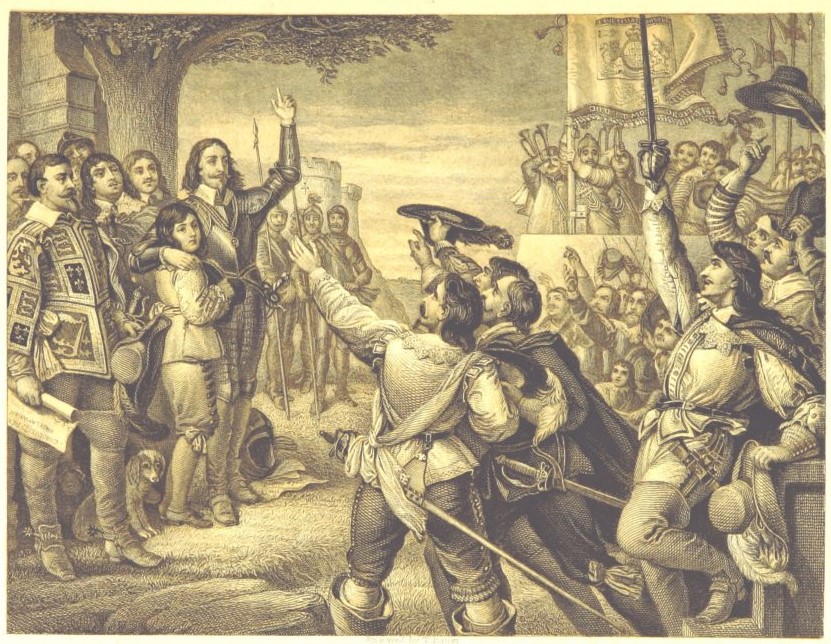
The dove descending breaks the air
T. S. Eliot, Little Gidding
With flame of incandescent terror
Of which the tongues declare
The one discharge from sin and error.
The only hope, or else despair
Lies in the choice of pyre or pyre –
To be redeemed from fire by fire.
‘Little Gidding’ is the last-published of the four poems that make up T. S. Eliot’s Four Quartets. The poem is structured after the manner of a piece of music, with themes being taken up, developed and related; in this way, it discusses a great range of topics, including English and American history, Eliot’s national identity, Christian conversion and salvation, the artistic process, literary tradition, and modernity. Of particular relevance to this museum is its discussion of war. Reference is frequently made, if at times obliquely, to the ongoing world war which, even if it were not mentioned, would inevitably have been occupying the mind of both Eliot and his first readers.
Most of the more explicit discussion of war, however, concerns the English Civil War, which is of particular relevance to Eliot because it was the religious conflicts of the 17th Century that forced his ancestors to emigrate to America from England. Eliot sees his own return to England, and embrace of English identity, as a form of resolution of that historic wound; he draws analogies with, on the personal level, the individual’s relation to their past sins, and, on the widest level, the redemption of humanity in the Crucifixion.

The section quoted here is immediately preceded by one such discussion of the Civil War, as the speaker thinks:
of a king at nightfall,
Of three men, and more, on the scaffold
And a few who died forgotten,
recalling both the dead of the Civil War and the scene of the Crucifixion. He asks
Why should we celebrate
These dead men more than the dying?
Here, ‘the dying’ refers both to all mortal humanity and, more specifically, to those dying in the ongoing Second World War. He answers himself first by affirming that ‘it is not to ring the bell backward’, not to revive old conflicts, but to recognise the fact that:
These men, and those who opposed them
And those whom they opposed
Accept the constitution of silence
And are folded in a single party.
Whatever we inherit from the fortunate
We have taken from the defeated
What they had to leave us – a symbol:
A symbol perfected in death.
The competing factions which fought over the English ‘constitution’ are shown to have accepted the constitution of death; because death is something they hold in common, it forms the ground for a reconciliation when the past conflict is viewed from the perspective of the present. Eliot sets out a logic according to which his own poem, like his embrace of England, can form the resolution to a historic conflict.
We are thus led into the section quoted at the beginning of this entry, where the dove descending from the sky in flames, in ‘incandescent terror’, would inevitably have suggested to a broadly-Christian audience, during the Second World War, simultaneously the Holy Spirit at Pentecost and German air raids. To unite the two in a single image, while the bombing is actually going on, is profoundly shocking, but we have been prepared for it by the preceding sections. The Christian concept of rebirth within the life of an individual, and the transcendent attitude to conflict which has been established by the consideration of the Civil War, provide Eliot, at least, with terms in which he can face the awful reality of civilian bombing.
This brief except and analysis cannot come close conveying the depth and breadth of the whole poem, but I hope that it has suggested how its deeply challenging imagery might provoke us to visualising peace in unexpected ways.
What do you think?
- How ‘defeatist’ would you say Eliot’s visualisation of peace is in this poem?
- What role does this poem suggest that acceptance – of loss, death, the past – plays in finding/making peace?
- What role does history play in helping Eliot to theorise about the consequences of war and the traumatic aftermath that inevitably follows?
- To what extent does Eliot’s visualisation of war’s aftermath rely on the reader’s knowledge of past models, images, symbolism and ideas? And what can this tell us about how habits of imagining and understanding peace form and change?
If you enjoyed this item in our museum…
You might also like ‘Dad’s Army‘, the ‘Magnus Archives‘, ‘The Ash that Travelled‘, and ‘Mother Night‘.
Thomas Frost, December 2022
External links
Spotify – T.S. Eliot Reads Four Quartets
Here, you can hear Eliot reading the whole of the Four Quartets, including “Little Gidding”.
Four Quartets – 4 Little Gidding (davidgorman.com)
Here is the full text of “Little Gidding”. The rest of Four Quartets is available on the same website.